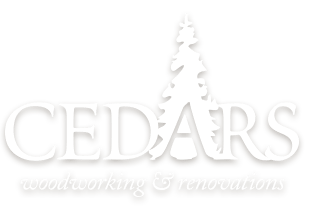 Hiring a knowledgeable contractor is probably the most crucial part of a remodel project. The right hire equates to cost savings down the road. With any remodel project, there are “best practices” that need to take place to ensure the project is done correctly the first time. The EPA has released an article outlining these best practices that contractors should follow. You can read the complete article here.
Hiring a knowledgeable contractor is probably the most crucial part of a remodel project. The right hire equates to cost savings down the road. With any remodel project, there are “best practices” that need to take place to ensure the project is done correctly the first time. The EPA has released an article outlining these best practices that contractors should follow. You can read the complete article here.
Regardless of project size and project type, there are simple practices that can be used to avoid problems during the project, and down the road. Below is Cedars Woodworking’s list of practices we abide by. If you are in the market for a contractor, please make sure whomever you hire practices the following:
- Analyzing and correcting the cause of any problem: A good professional home renovator won’t just address the symptoms, they will find the root underlying cause of the problems the project is addressing.
- Checking for lead paint: A good contractor will find out when the home was built and address any lead paint issues. It is best to hire a professional home renovator who is a Lead Based Paint Certified Renovator. This certification means that the renovator / contractor has completed a safety course held by the EPA and can safely and properly remove lead paint from your home.
- Addressing asbestos safely: If your home remodel project includes dealing with asbestos, it is important to use an asbestos professional.
- Using a professional to deal with mold issues: Since mold can cause allergic reactions, trigger asthma, or cause general respiratory issues, a professional home renovator should be used to deal with the cause of the mold, as well as clean up and prevent future issues. The same is true for renovations that will expose large areas of microbial growth. Doing it yourself is not a safe option for issues such as mold and bacteria.
- Protecting your home from construction dust: A good contractor will also use protective sheeting to prevent dust from circulating the entire home. The contractor will also ensure proper ventilation for the duration of the renovation project to prevent pollutants from spreading throughout the house. This ensures safety for both the occupants of the home, as well as the professional home renovator’s team of workers.
- Proper disposal of construction waste: Appropriate disposal for demolition and construction materials is imparative and a seasoned, skilled contractor will address waste according to state and local guidelines and laws as well as guidelines set up by the EPA.
- Following the rules: A good contractor will not bend the rules. Manufacturer recommendations regarding use of all products used during a project should be followed closely. In addition, an excellent professional home renovator will educate his team on Material Safety Data Sheets, which provide protocol for product use, clean up, handling, disposal and more.
Best practices keep everyone safe. At Cedars Woodworking, we prioritize our employees and our clients by participating in the best practices above. This attention to detail means that our employees are cared for, and our clients are honored. We hope that when you see a Cedars project, or meet a Cedars team member, that our commitment to safety and excellence shine through.

